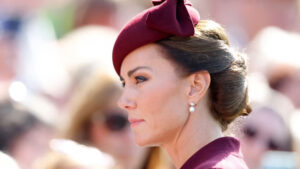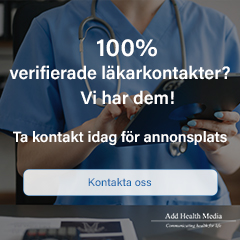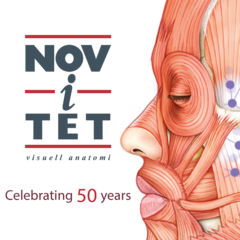Kate Middletons cancerbesked fick sökningarna att skjuta i höjden
Call it a silver lining: In addition to stopping the increasingly ludicrous theories for her absence from the public eye, Kate Middleton’s reveal last week that she’s fighting cancer may also be boosting awareness of the early signs and symptoms of the disease.
England’s taxpayer-funded National Health Service reported this week that the page of its website offering a general overview of cancer saw a nearly fivefold increase in visits in the 24 hours after the Princess of Wales’ broadcast on Friday, with 2,840 pageviews, up from the 600 visits the page received during the same period a week prior.

The Princess of Wales’ openness about her cancer diagnosis—and its subsequent boost in visits to online resources about cancer—follow a path recently laid by other members of the normally tight-lipped royal family. (Getty Images)
Even more popular was the NHS webpage devoted to outlining general signs and symptoms of cancer. Within the first three hours of Kate’s announcement, that page received nearly 4,200 views—which the NHS calculated as one site visit every three seconds—compared to just under 2,000 the week before.
“Receiving a cancer diagnosis can be very daunting—it turns your life upside down and speaking about it can be really difficult for people—the Princess of Wales bravely speaking out about her diagnosis will help others to do the same,” Peter Johnson, M.D., NHS England’s national clinical director for cancer, said in a statement. “There is no doubt that talking about cancer saves lives if it encourages people to come forward sooner if things aren’t right.”
During her March 22 broadcast, Kate shared that after she underwent a planned abdominal surgery in January for an undisclosed condition that doctors didn’t believe at the time to be cancerous, follow-up tests discovered cancer cells. Though she didn’t disclose what form of cancer she has, nor how it’s progressing, she said she is now in the “early stages” of a course of “preventative chemotherapy” recommended by her doctors.
The princess’ openness about her cancer diagnosis—and its subsequent boost in visits to online resources about cancer—follow a path recently laid by other members of the normally tight-lipped royal family. Their newfound candor has been hailed around the world, especially as it may be encouraging people to familiarize themselves with possible indicators of cancer, which could potentially lead to earlier diagnoses and, ideally, improved outcomes.
After the palace announced in January that King Charles had been treated for an enlarged prostate, NHS England reported that visits to its webpage on the condition had seen a more than 1,000% increase, with more than 16,400 visits on the day of the announcement, versus just 1,400 views the day before. A few weeks later, in early February, the palace confirmed that the monarch had been diagnosed with cancer—again, of an unspecified type—prompting a 51% surge in visits to the NHS page covering possible signs and symptoms of cancer, reaching 14,668 views in the day after the announcement.
Amid Charles’ health updates, his former sister-in-law, Sarah Ferguson, the Duchess of York, shared a statement of her own describing her diagnosis with malignant melanoma. That, too, sent online symptom searches soaring, with the NHS’ info page about melanoma skin cancer receiving more than 13,600 visits in the 48 hours after Fergie’s announcement, more than eight times higher than its views during the same period a week before.





